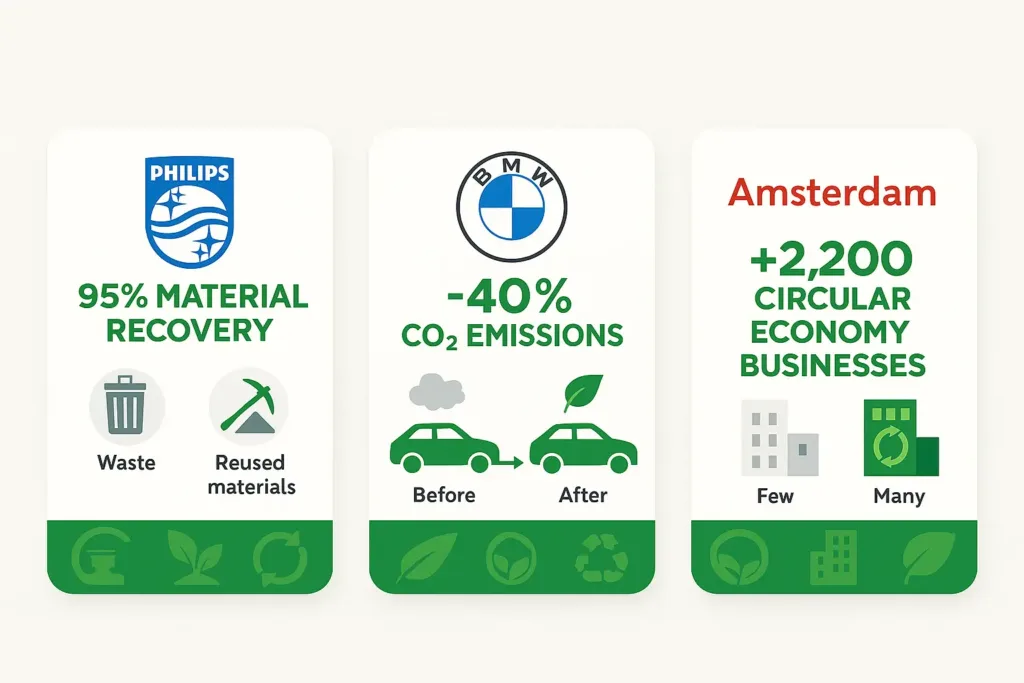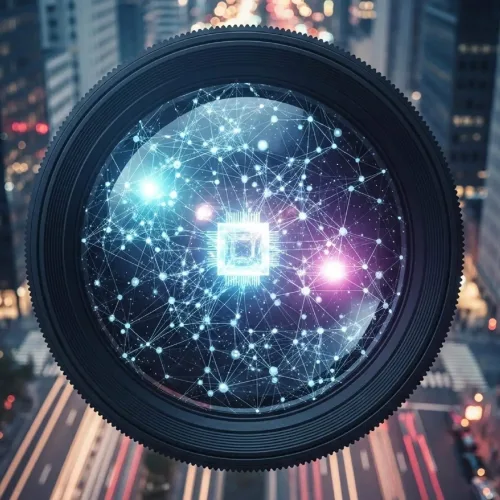Every year, billions of tons of waste end up in landfills or oceans or get incinerated. Most of this waste comes from a wasteful way of doing things called the linear economy. We take resources, make materials, use them just a little, and then—bam—they are in the trash. Our planet can only take so much of that. Now, let’s talk about the circular economy. This concept is a game changer! It’s all about cutting down on waste, saving resources, and, honestly, giving nature a chance to bounce back. In the circular economy, instead of just taking and throwing, everything plays a role. Nothing goes to waste. According to the Ellen MacArthur Foundation;
If we want to fix the climate, we have to transform the economy—and not only the way it’s powered.
In this post, I’ll break down the circular economy in straightforward terms. You will see how it works. You will understand why it is so important. It is already shaking things up from city planning to how we design products. So, whether you are a student or a business owner, this guide is like your map to a better future. It is valuable for both people and the Earth. So, let’s start.
What Is a Circular Economy?
The circular economy is a game-changer for how we think about these economic systems. It’s all about creating benefits for people, businesses, and the planet. The old linear economy follows a wasteful cycle. It involves taking resources, making stuff, and then throwing it away. While the circular economy aims for something more sustainable. It focuses on smart design and better resource management to keep things running smoothly. It’s a refreshing move that could lead to some serious positive changes!
Core Principles
The circular economy revolved around three main ideas:
- Remove Waste and Pollution: This means that products and their creation processes are carefully designed. The aim is to avoid generating waste or harmful emissions from the start. Their goal is to lower the environmental footprint throughout their entire life.
- Circulate Products and Materials: This one is all about keeping things in use for as long as possible. Consider reusing, repairing, refurbishing, and recycling. By doing this, we are making sure that materials and products keep their value. They are not just thrown aside.
- Regenerate Nature: It’s all about giving back to the environment. This means returning nutrients and resources to the earth, which helps support ecosystems. Practices like sustainable farming come into play here. They verify that we are not just taking from nature. We are also taking care of it.
Linear vs. Circular Models
To fully understand the power of the circular economy, it helps to understand its contrast with the dominant linear model.
In a linear economy:
- We take raw materials from the earth.
- We make products from these materials.
- We dispose of products when we are done with them, usually in landfills or by incineration.
This process is inherently wasteful. Resources are constantly extracted, used once, and then discarded.
In a circular economy:
- Products are designed for durability, reuse, and recycling.
- When a product reaches the end of its first life, its components and materials are recovered. They are then put back into the cycle.
- This significantly reduces the need for new raw material extraction and minimizes waste.
This shift highlights the immense environmental costs saved by transitioning to a circular system. Instead of losing value at the end of life, materials keep their value by continuously circulating. I have summarized this data in a table, check it out.
| Feature | Linear Economy | Circular Economy |
|---|---|---|
| Resource flow | One-way | Closed-loop |
| Waste outcome | Landfill and incineration | Materials recovered |
| Carbon footprint | High | Reduced via reuse |
| Economic benefits | Limited | Increased through reuse |
How Circular Economy Protects Our Planet
When we implement circular economy principles, we are not just talking about a fashion statement. We are actually making a tangible difference for the environment. Think about it: we are reducing the amount of waste that ends up in landfills and significantly cutting down on greenhouse gas emissions. This process shows how we can overcome some big environmental challenges we face today.
1. Waste Reduction & Resource Efficiency
One of the first things you notice with a circular economy is just how much waste gets cut down. In reality, the accumulation of waste in landfills can be significantly reduced. The movement of materials in our oceans can also be minimized. This is achievable by implementing strategies that remove waste and sustain the circulation of materials. This all adds up to better landfill diversion rates and significant savings on materials.
Instead of always reaching for new resources, we start using what we have already got. This way, we lower the need for fresh materials and help take some pressure off those delicate ecosystems. Strategies like reusing materials and remanufacturing shine here. They can lead to some remarkable savings on materials compared to just cranking out new items all the time. It is all about being smarter with what we have!
2. Climate Impact Mitigation
When it comes to cutting down on life cycle emissions, closed-loop sourcing and using renewable materials definitely make a difference. It is quite impressive! If we consider the businesses-as-a-service model, companies can reduce their carbon footprints by about 20 to 30%. This is in comparison to the old way of doing sales. This is largely due to things like extended producer responsibility and smarter logistics. It is all about making our processes more efficient while being kinder to the planet.
| Strategy | Emissions Saved (relative) |
|---|---|
| Recycling aluminum | 95% |
| Remanufacturing automotive parts | 85% |
| Product-as-a-service models | 25% |
3. Biodiversity and Ecosystem Regeneration
The circular economy plays a crucial role in boosting biodiversity. It’s all about regenerating those natural systems we often take for granted. Take circular agriculture, for example. It’s kind of neat how it takes organic waste. It turns it into fertilizer. It is like giving back to the earth. This mirrors natural cycles. This not only improves soil health but also helps to restore ecosystems and safeguard various species. It is a win-win for our planet!
| Practice | Linear Economy Emissions (kg CO2/ton) | Circular Economy Emissions (kg CO2/ton) | Savings (%) |
|---|---|---|---|
| Aluminum Production | 16,000 | 800 | 95% |
| Plastic Recycling | 2,500 | 1,000 | 60% |
| Textile Reuse | 15,000 | 3,000 | 80% |
Real-World Circular Economy Examples
The circular economy is making waves in different industries and even in communities. Let’s dive into a few examples that highlight its impact. You will see just how far-reaching this concept can be!
1. Product-as-a-Service Model
Philips Lighting has this fascinating approach called “lighting as a service.” Instead of buying fixtures outright, customers just pay for the light they use. When it’s time to end the usage period, Philips collects the materials. They give them a nice refresh and then put them back into use. It is like a closed-loop system! This entire model cuts down on waste. It also encourages products that are built to last. These products work efficiently.
2. Closed-Loop Recycling in Industry
So, you know how BMW is all about sustainability? They have got this cool thing called closed-loop recycling in their car production. When a vehicle reaches the end of its life, BMW takes materials like steel and plastics. They give them a second chance. They are actually reused in making new cars! Can you believe it? They have managed to hit a recycling rate of over 95%! It really helps cut down on waste and saves valuable resources.
3. Urban Circular Initiatives
Amsterdam is at the edge when it comes to urban circularity. They have set up these awesome sharing economy hubs. Folks can just borrow tools there. They don’t need to shell out money to buy them. Plus, the city has some solid circular procurement policies in place. These policies encourage suppliers to go green, which is great because it helps create this whole network of industrial symbiosis. It is about cutting down on environmental impact. So, it is a smart choice to living sustainably!

How to Implement Circular Strategies
Jumping into the circular economy is not just a one-person job; it needs everyone on board—businesses, communities, and individuals alike. So, where do you start? Let’s break it down a bit.
For Businesses
- Pilot Projects: Test circular strategies, like product leasing, on a small scale to assess feasibility.
- Track Metrics: Use life cycle assessments (LCA) to track material circularity and waste reduction.
- Build Ecosystems: Partner with suppliers and customers to create circular supply chains, enhancing extended producer responsibility (EPR).
For Communities and Educators
- Educate: Incorporate circular economy modules into school curricula and host public workshops to raise awareness.
- Advocate: Support municipal recycling and composting programs to reduce waste.
- Join: Join community initiatives like repair cafés or tool-sharing platforms to promote reuse.
By starting small and scaling up, everyone can contribute to a circular future.
A Smarter Way Ahead
The circular economy gives us a fresh and sustainable choice compared to the old linear model. It is all about cutting down on waste, keeping materials in play, and even helping nature bounce back. This method is a game changer. It significantly impacts the fight against climate change. It aids in saving our resources and looks out for biodiversity.
Just take a look at some real-life examples—like Philips’ lighting-as-a-service or those sharing hubs in Amsterdam. They really show what is possible!
So, why not come together and work towards a planet that is not just surviving but thriving? Let’s get started today! Supporting the principles of the circular economy could lead us to a smarter and greener future.




